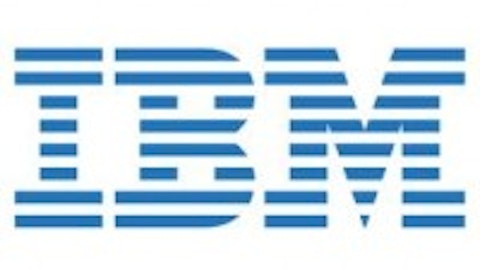I have been a GeForce fan for a long time. ATI’s Radeon graphics cards never won me over. NVIDIA Corporation (NASDAQ:NVDA) actually inherited me from 3dfx, as I was an owner of the Voodoo graphics card, though I had abandoned desktops after the Voodoo3 and only came back in the last five years. I own and use a desktop for gaming. I have been a follower of NVIDIA Corporation (NASDAQ:NVDA) graphics technology for a long time, though I missed the whole Tegra thing while I was getting an education.
NVIDIA — strong innovation but behind in integrated chips
I liked NVIDIA Corporation (NASDAQ:NVDA)’s announcement about the Tegra 4, because it was about time. The Tegra 3 was getting a bit old. The new version sports the Cortex A15, which from all accounts is a beast of a chip. It is not really designed for phones, except the most high-end models. The Cortex processor and the Tegra system-on-chip in general is all about performance. It requires more power than alternatives like the Atom platform from Intel or QUALCOMM, Inc. (NASDAQ:QCOM)’s Snapdragon.
NVIDIA Corporation (NASDAQ:NVDA) has still managed to provide a lot of processing power for minimal power, but with the Cortex A15, it just will not be as low-power in absolute terms as some others. Not everything is compared in relative terms. Having the fastest phone on the planet would be pointless if the battery drained in a minute.
QUALCOMM, Inc. (NASDAQ:QCOM) has a fantastic line of chips for smartphones. That is why it is being installed in the new Samsung Galaxy S4 phones. That is a pretty high-profile socket, since it is considered the main competitor to Apple Inc. (NASDAQ:AAPL)’s almost peerless iPhone.
 Despite the Tegra 4 announcement, NVIDIA s behind in some regards. The Tegra 4i is designed with an integrated LTE modem, but it is not going to be available till the end of 2013. You probably won’t see it in phones until 2014.
Despite the Tegra 4 announcement, NVIDIA s behind in some regards. The Tegra 4i is designed with an integrated LTE modem, but it is not going to be available till the end of 2013. You probably won’t see it in phones until 2014.
QUALCOMM, Inc. (NASDAQ:QCOM) has had an integrated processor and LTE modem since the previous iteration of the Snapdragon. The Snapdragon S4 Pro is rumored to get the socket in the next Nexus tablet. QUALCOMM, Inc. (NASDAQ:QCOM) stands alone with integration. The benefit of integration is that processing for internet tasks will be faster, giving you the feel of faster internet. It is also more power efficient.
Tegra 4 will be used here and there, but I think the best use I like for the chip is Project Shield. I say here and there almost dismissively, but it is a great product and should see success. I do not think it can compete with Qualcomm in smartphones due to the Cortex A15 sucking up the juice. Project Shield is NVIDIA’s handheld gaming system, but little else is known at this point. I do think Project Shield looks great, and it is part of the growth strategy.
QUALCOMM, Inc. (NASDAQ:QCOM) is quite profitable, and is only seeing growth. With no debt, I think it is a fantastic company. Innovative, popular, and debt-free is a great combination. I would buy NVIDIA for reasons I will get into, but I would also buy Qualcomm for its potential in the smartphone industry. I have a positive long-term outlook on QUALCOMM, Inc. (NASDAQ:QCOM).
Acknowledging the sometimes silent victor
All these products can be linked to ARM Holdings plc (ADR) (NASDAQ:ARMH). The Cortex A15 is their design, and Qualcomm’s Krait core is based on the Cortex A15 and is still ARM-based. The Opteron chip AMD is designing will use the next Cortex core. ARM does not manufacture its own chips. It designs them and then contracts out the manufacturing.


